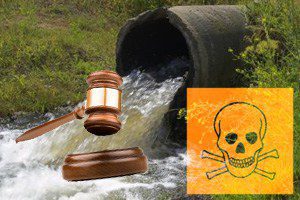
Four lawsuits have been filed against C. E. Taylor Inc. over toxins that are allegedly polluting water supplies. According to The State, the lawsuit claims that the Taylor company disposal ground has polluted some backyard wells with nitrate. One lawsuit has, for the first time, linked the sewage dump and private well pollution. Should that […]
 Four lawsuits have been filed against C. E. Taylor Inc. over toxins that are allegedly polluting water supplies.
Four lawsuits have been filed against C. E. Taylor Inc. over toxins that are allegedly polluting water supplies.
According to The State, the lawsuit claims that the Taylor company disposal ground has polluted some backyard wells with nitrate. One lawsuit has, for the first time, linked the sewage dump and private well pollution. Should that lawsuit settle in favor of the plaintiff, said, The State, Taylor might, in addition to paying damages, also be required to clean up the groundwater. To date, regulators have not mandated that Taylor conduct a clean up, which could cost the firm millions.
At least one plaintiff’s attorney believes sufficient evidence exists to show that the contamination originates at the dump and states that Taylor’s sewage dump has “allowed unsafe levels of hazardous materials to contaminate the groundwater of the plaintiff’s property, making the water undrinkable and unfit for daily use,” according to the State. The sewage dump rests on top of nitrate-contaminated groundwater.
Pelion’s sewage dump—the largest in South Carolina—has seen many complaints since the South Carolina Department of Health and Environmental Control (DHEC) permitted the site in 1989. That same year, the DHEC stated that the disposal site would pose no environmental dangers; however, odors have been emitting from the site and groundwater contamination has been strongly suspected, said The State.
According to the DHEC, the dump is the likely culprit in groundwater contamination below the disposal site; however, its testing does not confirm that the site contaminated nearby wells, said The State. Officials at the agency say the site should be monitored to see if the pollution spreads, as opposed to initiating a clean-up, and that nitrate levels are dropping and should continue. Dumping is expected to be finished by year-end, at which point, the ground will be closed. C.E. Taylor chief executive, Frank Taylor, said he “was tired of fighting neighbors,” said The State, announcing in November that the site would be permanently shut down.
The Pelion disposal area is a so-called “land application site” and sewage pumped from septic tanks or portable toilets is brought there via tanker trucks; restaurant grease is also hauled to the site. All of it, said The State, is treated with lime and spread on the ground. The sewage is a fertilizer for crops on the property. Should too much sewage be applied, or if it is spread on bare earth, nitrate from the waste leaks through the “sandy, permeable soil,” polluting groundwater, The State explained.
As we’ve explained, high nitrate levels in drinking water have been associated with thyroid cancer, skin rashes, hair loss, birth defects, and “blue baby syndrome,” which is a potentially fatal blood disorder seen in babies. The Environmental Protection Agency (EPA) says nitrates are generally used as a fertilizer and can cause serious health problems, especially in infants under the age of six who drink water containing nitrate in excess of the maximum contaminant level (MCL). In addition to blue baby syndrome, symptoms include shortness of breath. The State explained that when baby formula becomes tainted with nitrates, children can die because oxygen in the blood is not received.
Nitrates are odorless and tasteless compounds and form when nitrogen from ammonia, and other sources, combine with water. Although naturally occurring, nitrogen and nitrates in drinking water has increased significantly with the use of synthetic fertilizers.
In 2005, the state put the sewage dump on a list of properties with polluted groundwater, prompting questions about water pollution, said The State. Agency records also show that, while the DHEC did not fine the company and it is legal to spread human waste as fertilizer on grassy fields, the Taylor dump did not always have crop cover. The sewage dump, which is 287 acres, took more septic tank and portable toilet waste than any other South Carolina location; about 150 million gallons of sewage have been dumped on the property, according to the DHEC, said The State.


